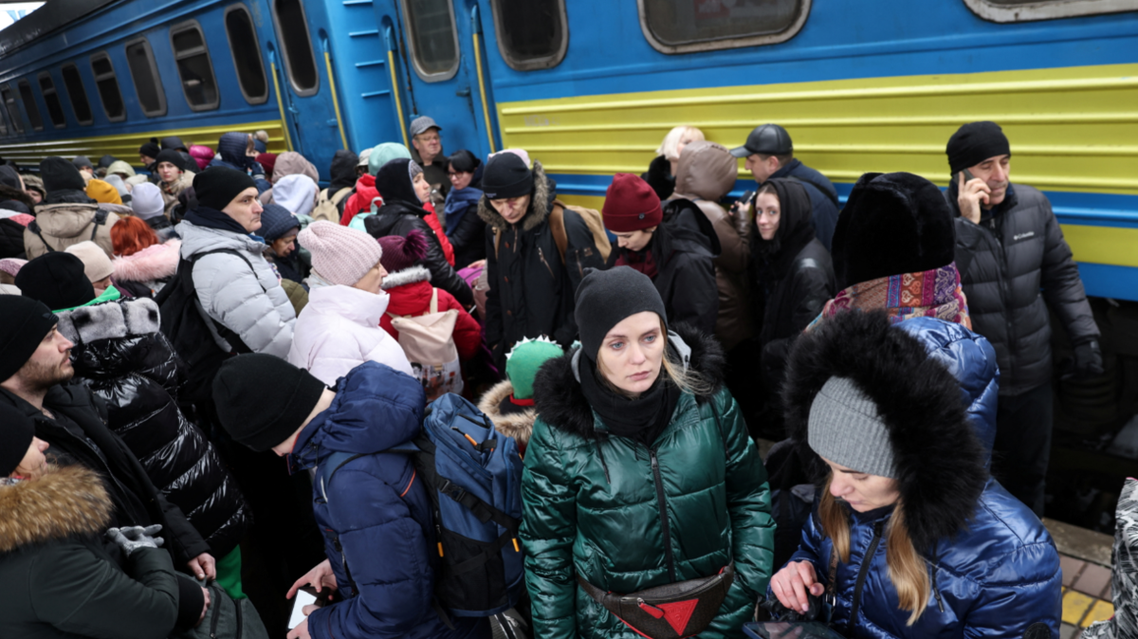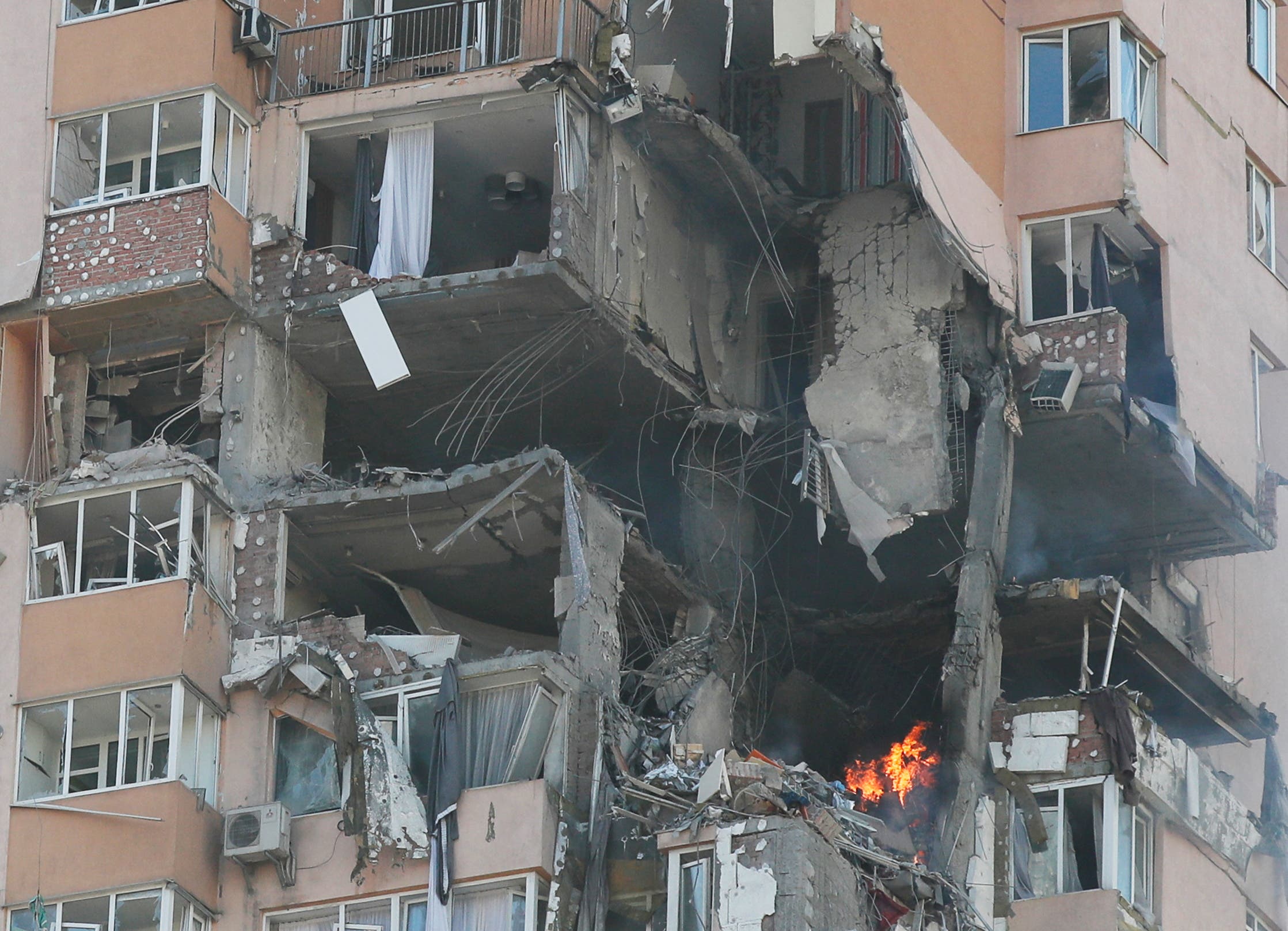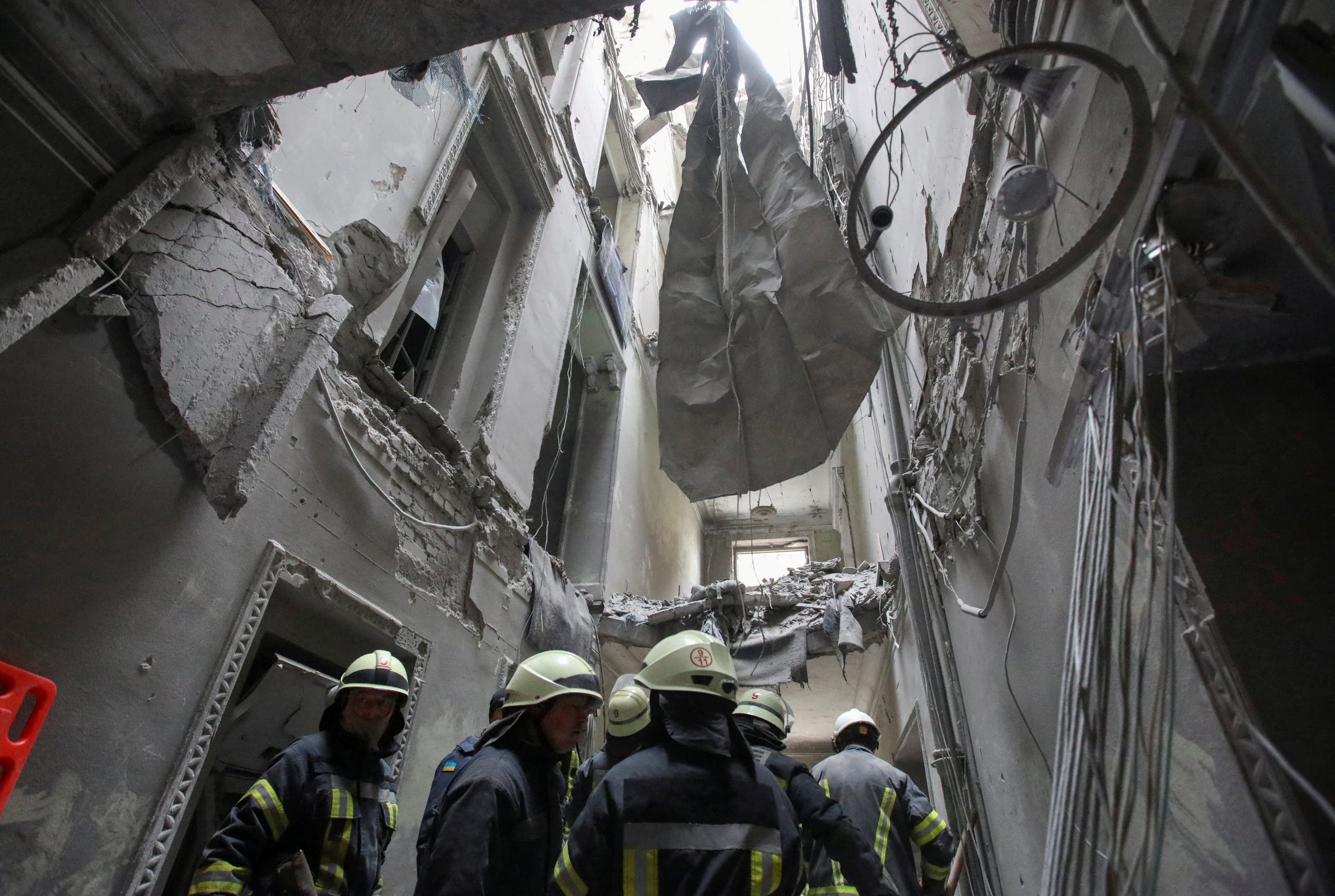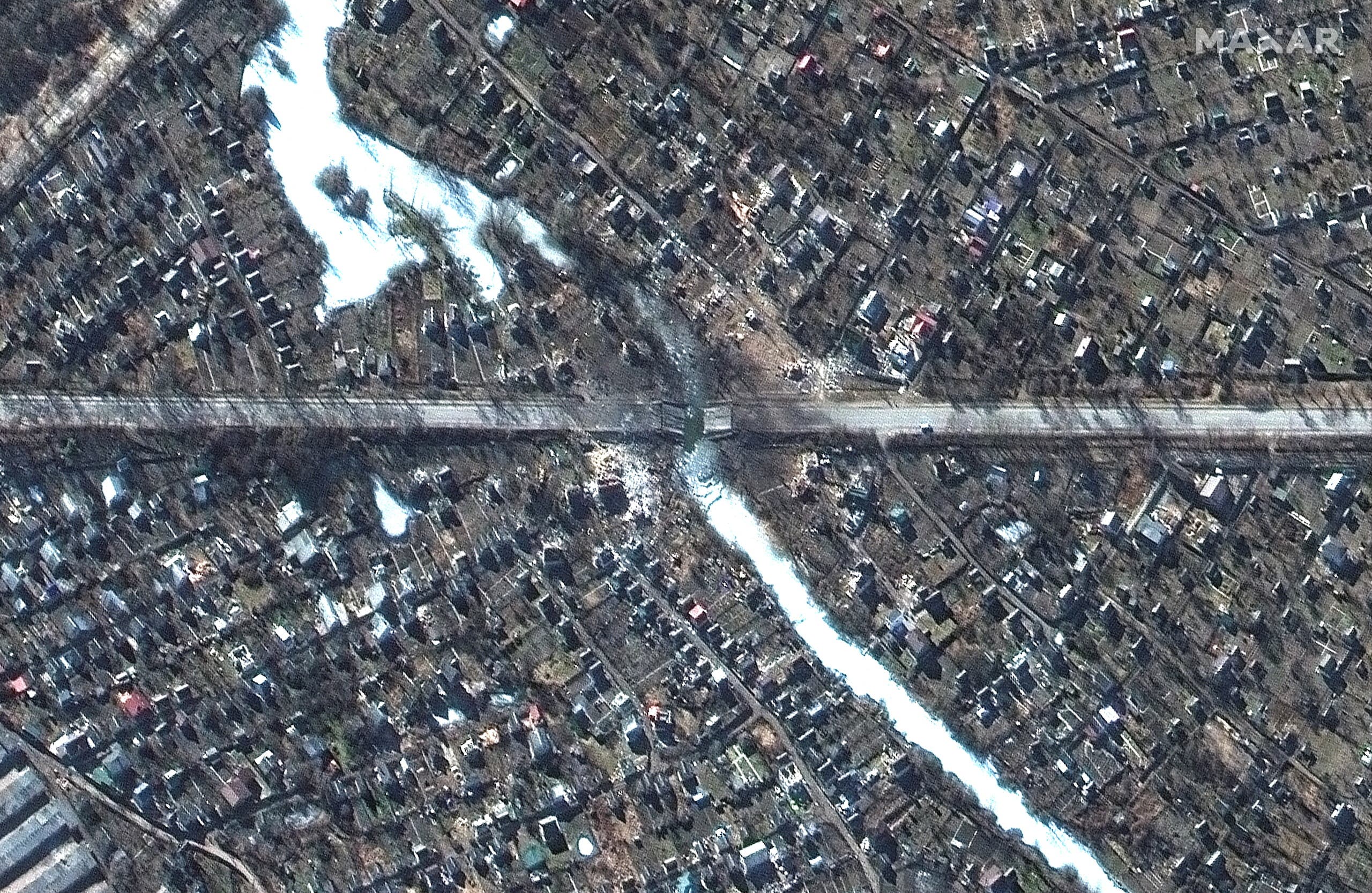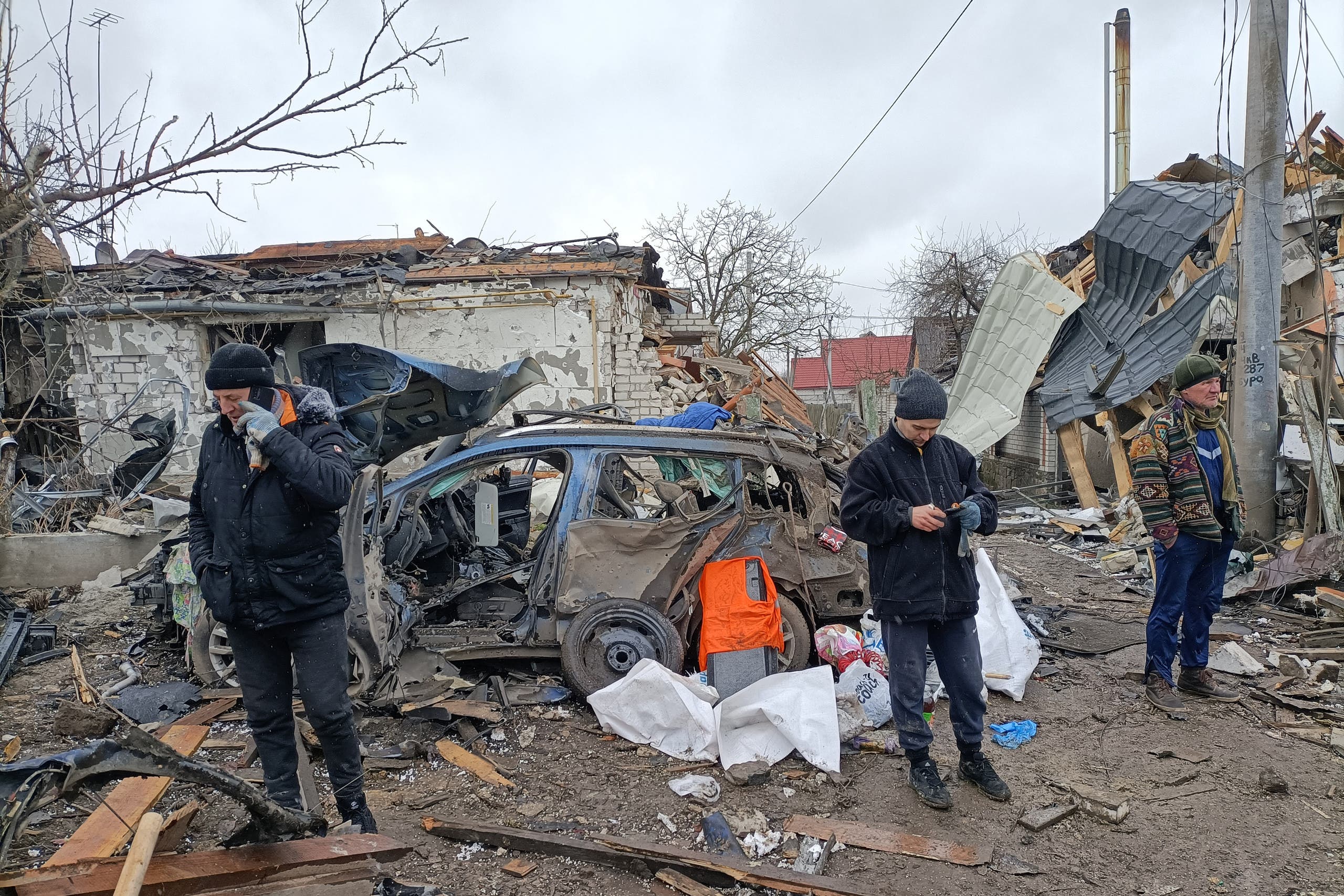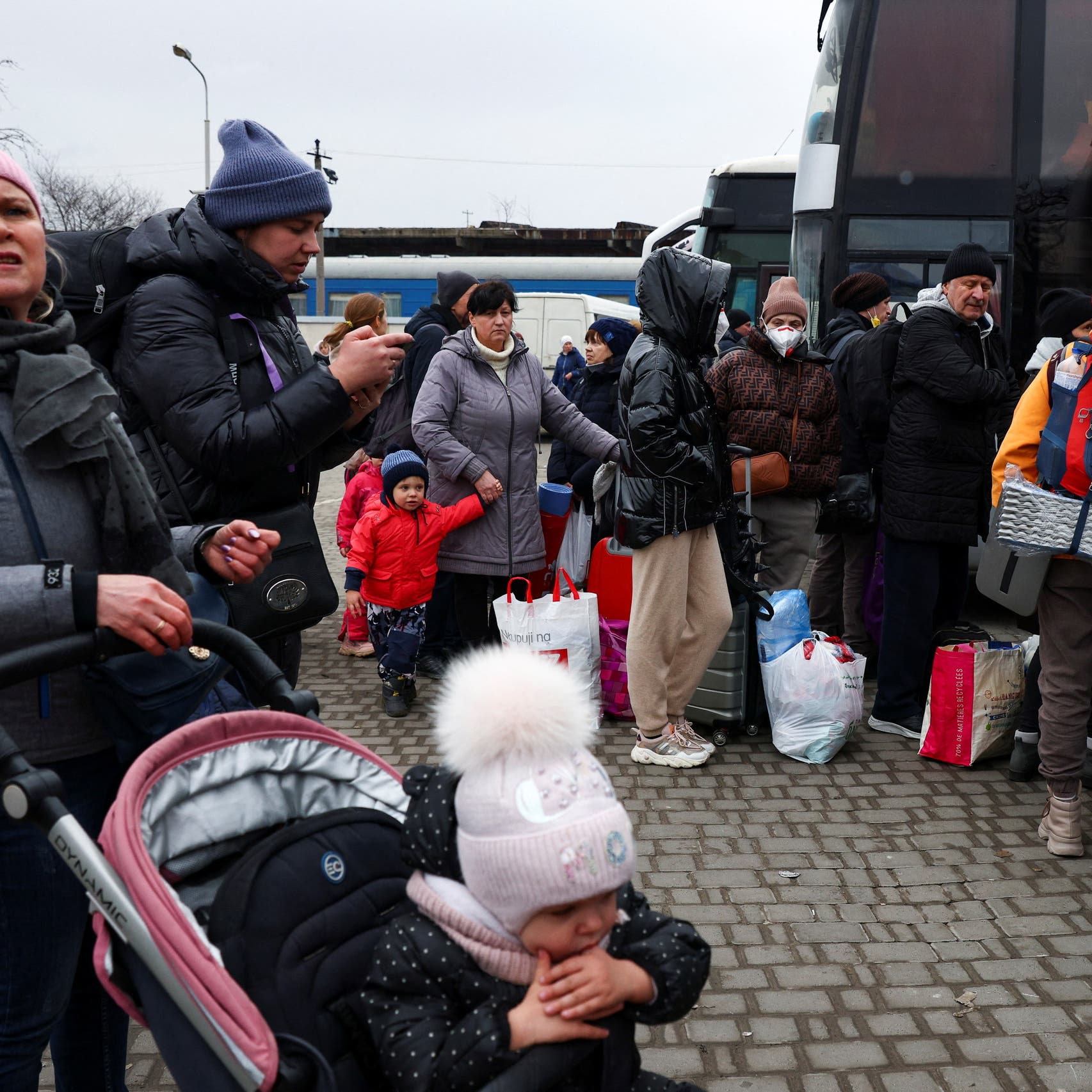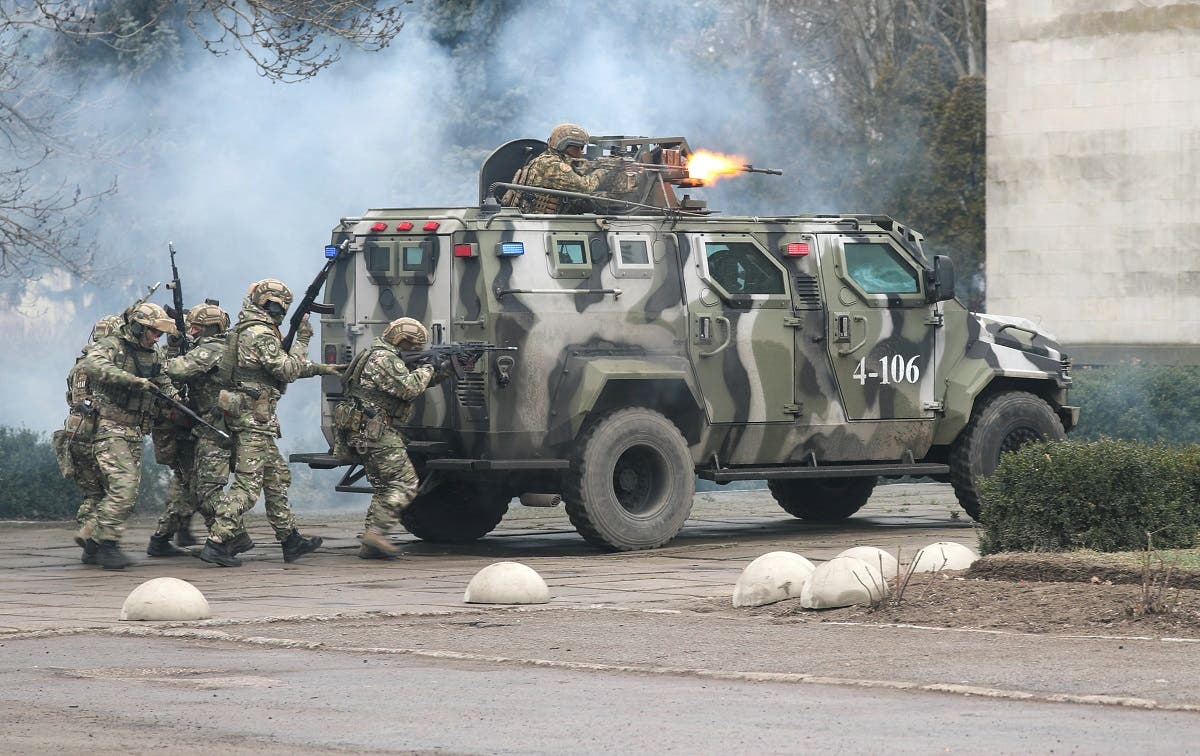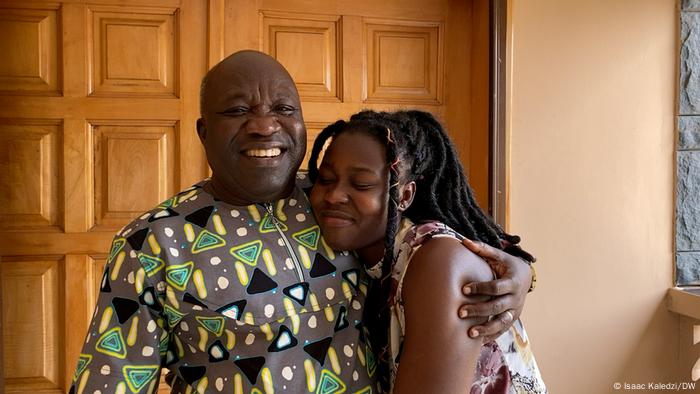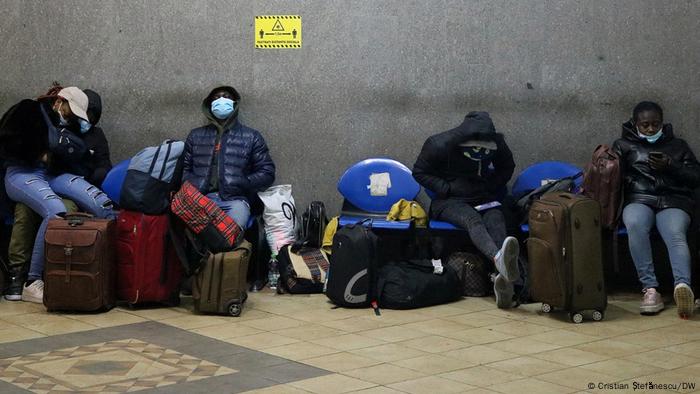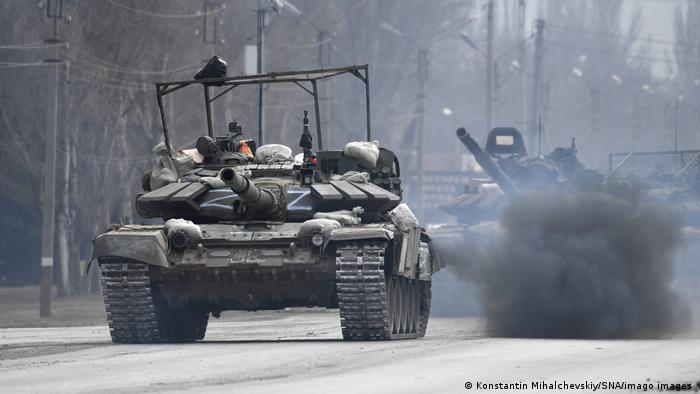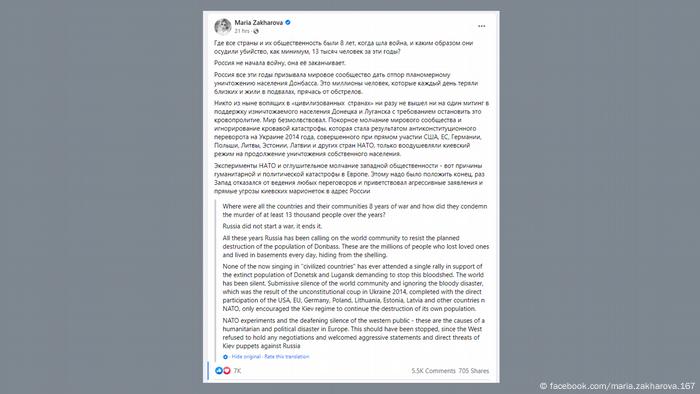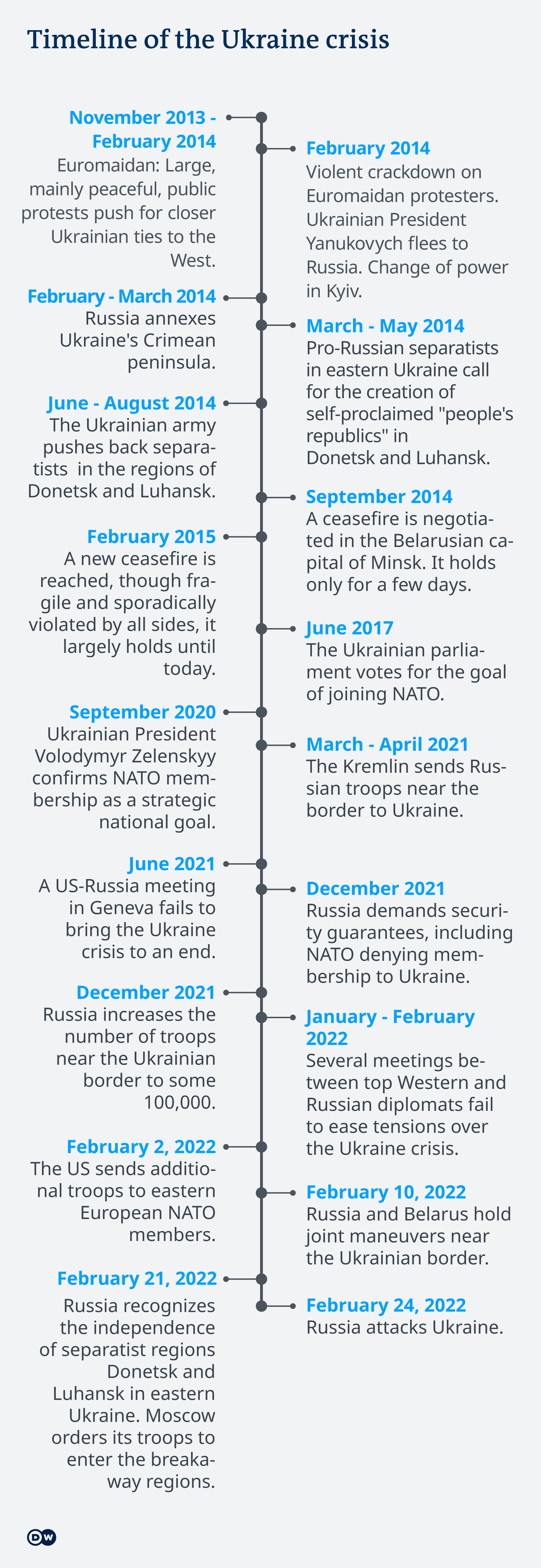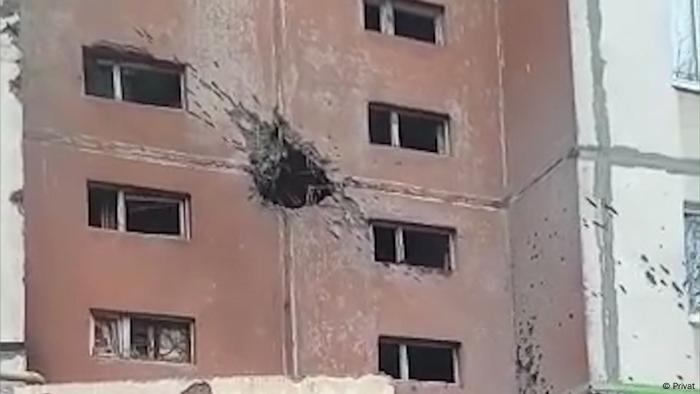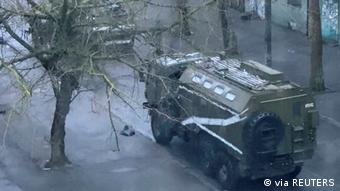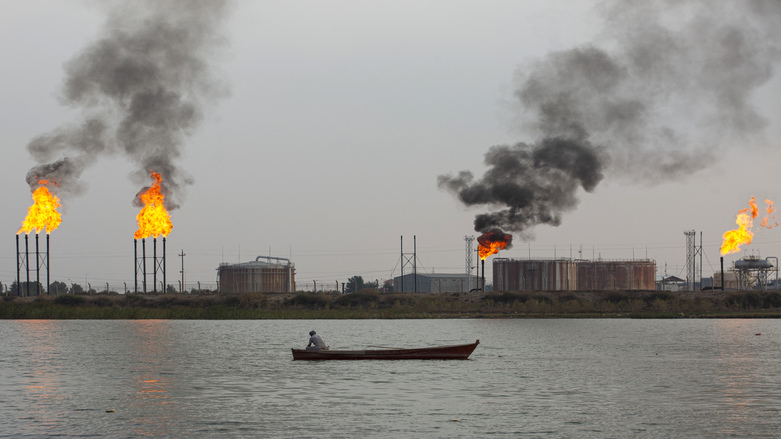

1 / 21
Ukraine Nuclear PlantThis image made from a video released by Zaporizhzhia nuclear power plant shows bright flaring object landing in grounds of the nuclear plant in Enerhodar, Ukraine Friday, March 4, 2022. Russian forces shelled Europe’s largest nuclear plant early Friday, sparking a fire as they pressed their attack on a crucial energy-producing Ukrainian city and gained ground in their bid to cut off the country from the sea.
(Zaporizhzhia nuclear power plant via AP)
JIM HEINTZ, YURAS KARMANAU and MSTYSLAV CHERNOV
Thu, March 3, 2022
KYIV, Ukraine (AP) — A fire at Europe’s biggest nuclear plant ignited by Russian shelling has been extinguished, Ukrainian authorities said Friday, and Russian forces have taken control of the site.
Ukraine’s state nuclear regulator said that no changes in radiation levels have been recorded so far. It said staff are studying the site to check for other damage to the compartment of reactor No. 1 at the Zaporizhzhia plant in the city of Enerhodar.
The regulator noted in a statement on Facebook the importance of maintaining the ability to cool nuclear fuel, saying the loss of such ability could lead to an accident even worse than 1986 Chernobyl accident, the world’s worst nuclear disaster, or the 2011 Fukushima meltdowns in Japan. It also noted that there is a storage facility for spent nuclear fuel at the site, though there was no sign that facility was hit by shelling.
The shelling of the plant came as the Russian military pressed their attack on a crucial energy-producing Ukrainian city and gained ground in their bid to cut off the country from the sea. As the invasion entered its second week, another round of talks between Russia and Ukraine yielded a tentative agreement to set up safe corridors to evacuate citizens and deliver humanitarian aid.
Leading nuclear authorities were worried — but not panicked — about the damage to the power station. The assault, however, led to phone calls between Ukrainian President Volodymyr Zelenskyy and U.S. President Joe Biden and other world leaders. The U.S. Department of Energy activated its nuclear incident response team as a precaution.
Earlier, nuclear plant spokesman Andriy Tuz told Ukrainian television that shells fell directly on the facility and set fire to one of its six reactors. That reactor is under renovation and not operating, he said.
The Zaporizhzhia regional military administration said that measurements taken at 7 a.m. Friday (0500 GMT) showed radiation levels in the region “remain unchanged and do not endanger the lives and health of the population.”
The mayor of Enerhodar, Dmytro Orlov, announced on his Telegram channel Friday morning that “the fire at the (nuclear plant) has indeed been extinguished.” His office told The Associated Press that the information came from firefighters who were allowed onto the site overnight.
British Prime Minister Boris Johnson called for an emergency meeting of the U.N. Security Council in “coming hours” to raise the issue of Russia’s attack on the nuclear power plant, according to a statement from his office.
U.S. Energy Secretary Jennifer Granholm tweeted that the Zaporizhzhia plant’s reactors were protected by robust containment structures and were being safely shut down.
In an emotional speech in the middle of the night, Zelenskyy said he feared an explosion that would be “the end for everyone. The end for Europe. The evacuation of Europe.”
“Only urgent action by Europe can stop the Russian troops,” he said. “Do not allow the death of Europe from a catastrophe at a nuclear power station.”
But most experts saw nothing to indicate an impending disaster.
The International Atomic Energy Agency said the fire had not affected essential equipment and that Ukraine’s nuclear regulator reported no change in radiation levels. The American Nuclear Society concurred, saying that the latest radiation levels remained within natural background levels.
“The real threat to Ukrainian lives continues to be the violent invasion and bombing of their country,” the group said in a statement.
Orlov, the mayor of Enerhodar, said Russian shelling stopped a few hours before dawn, and residents of the city of more than 50,000 who had stayed in shelters overnight could return home. The city awoke with no heat, however, because the shelling damaged the city’s heating main, he said.
Prior to the shelling, the Ukrainian state atomic energy company reported that a Russian military column was heading toward the nuclear plant. Loud shots and rocket fire were heard late Thursday.
Later, a livestreamed security camera linked from the homepage of the Zaporizhzhia plant showed what appeared to be armored vehicles rolling into the facility’s parking lot and shining spotlights on the building where the camera was mounted.
Then there were what appeared to be muzzle flashes from vehicles, followed by nearly simultaneous explosions in surrounding buildings. Smoke rose into the frame and drifted away.
Vladimir Putin’s forces have brought their superior firepower to bear over the past few days, launching hundreds of missiles and artillery attacks on cities and other sites around the country and making significant gains in the south.
The Russians announced the capture of the southern city of Kherson, a vital Black Sea port of 280,000, and local Ukrainian officials confirmed the takeover of the government headquarters there, making it the first major city to fall since the invasion began a week ago.
A Russian airstrike on Thursday destroyed the power plant in Okhtyrka, leaving the city without heat or electricity, the head of the region said on Telegram. In the first days of the war, Russian troops attacked a military base in the city, located between Kharkiv and Kyiv, and officials said more than 70 Ukrainian soldiers were killed.
“We are trying to figure out how to get people out of the city urgently because in a day the apartment buildings will turn into a cold stone trap without water, light or electricity,” Dmytro Zhyvytskyy said.
Heavy fighting continued on the outskirts of another strategic port, Mariupol, on the Azov Sea. The battles have knocked out the city’s electricity, heat and water systems, as well as most phone service, officials said. Food deliveries to the city were also cut.
Associated Press video from the port city showed the assault lighting up the darkening sky above deserted streets and medical teams treating civilians, including a 16-year-old boy inside a clinic who could not be saved. The child was playing soccer when he was wounded in the shelling, according to his father, who cradled the boy’s head on the gurney and cried.

APTOPIX Germany
Severing Ukraine’s access to the Black and Azov seas would deal a crippling blow to its economy and allow Russia to build a land corridor to Crimea, seized by Moscow in 2014.
Overall, the outnumbered, outgunned Ukrainians have put up stiff resistance, staving off the swift victory that Russia appeared to have expected. But a senior U.S. defense official, speaking on condition of anonymity, said Russia’s seizure of Crimea gave it a logistical advantage in that part of the country, with shorter supply lines that smoothed the offensive there.
Ukrainian leaders called on the people to defend their homeland by cutting down trees, erecting barricades in the cities and attacking enemy columns from the rear. In recent days, authorities have issued weapons to civilians and taught them how to make Molotov cocktails.
“Total resistance. ... This is our Ukrainian trump card, and this is what we can do best in the world,” Oleksiy Arestovich, an aide to Zelenskyy, said in a video message, recalling guerrilla actions in Nazi-occupied Ukraine during World War II.
JIM HEINTZ, YURAS KARMANAU and MSTYSLAV CHERNOV
Thu, March 3, 2022
KYIV, Ukraine (AP) — A fire at Europe’s biggest nuclear plant ignited by Russian shelling has been extinguished, Ukrainian authorities said Friday, and Russian forces have taken control of the site.
Ukraine’s state nuclear regulator said that no changes in radiation levels have been recorded so far. It said staff are studying the site to check for other damage to the compartment of reactor No. 1 at the Zaporizhzhia plant in the city of Enerhodar.
The regulator noted in a statement on Facebook the importance of maintaining the ability to cool nuclear fuel, saying the loss of such ability could lead to an accident even worse than 1986 Chernobyl accident, the world’s worst nuclear disaster, or the 2011 Fukushima meltdowns in Japan. It also noted that there is a storage facility for spent nuclear fuel at the site, though there was no sign that facility was hit by shelling.
The shelling of the plant came as the Russian military pressed their attack on a crucial energy-producing Ukrainian city and gained ground in their bid to cut off the country from the sea. As the invasion entered its second week, another round of talks between Russia and Ukraine yielded a tentative agreement to set up safe corridors to evacuate citizens and deliver humanitarian aid.
Leading nuclear authorities were worried — but not panicked — about the damage to the power station. The assault, however, led to phone calls between Ukrainian President Volodymyr Zelenskyy and U.S. President Joe Biden and other world leaders. The U.S. Department of Energy activated its nuclear incident response team as a precaution.
Earlier, nuclear plant spokesman Andriy Tuz told Ukrainian television that shells fell directly on the facility and set fire to one of its six reactors. That reactor is under renovation and not operating, he said.
The Zaporizhzhia regional military administration said that measurements taken at 7 a.m. Friday (0500 GMT) showed radiation levels in the region “remain unchanged and do not endanger the lives and health of the population.”
The mayor of Enerhodar, Dmytro Orlov, announced on his Telegram channel Friday morning that “the fire at the (nuclear plant) has indeed been extinguished.” His office told The Associated Press that the information came from firefighters who were allowed onto the site overnight.
British Prime Minister Boris Johnson called for an emergency meeting of the U.N. Security Council in “coming hours” to raise the issue of Russia’s attack on the nuclear power plant, according to a statement from his office.
U.S. Energy Secretary Jennifer Granholm tweeted that the Zaporizhzhia plant’s reactors were protected by robust containment structures and were being safely shut down.
In an emotional speech in the middle of the night, Zelenskyy said he feared an explosion that would be “the end for everyone. The end for Europe. The evacuation of Europe.”
“Only urgent action by Europe can stop the Russian troops,” he said. “Do not allow the death of Europe from a catastrophe at a nuclear power station.”
But most experts saw nothing to indicate an impending disaster.
The International Atomic Energy Agency said the fire had not affected essential equipment and that Ukraine’s nuclear regulator reported no change in radiation levels. The American Nuclear Society concurred, saying that the latest radiation levels remained within natural background levels.
“The real threat to Ukrainian lives continues to be the violent invasion and bombing of their country,” the group said in a statement.
Orlov, the mayor of Enerhodar, said Russian shelling stopped a few hours before dawn, and residents of the city of more than 50,000 who had stayed in shelters overnight could return home. The city awoke with no heat, however, because the shelling damaged the city’s heating main, he said.
Prior to the shelling, the Ukrainian state atomic energy company reported that a Russian military column was heading toward the nuclear plant. Loud shots and rocket fire were heard late Thursday.
Later, a livestreamed security camera linked from the homepage of the Zaporizhzhia plant showed what appeared to be armored vehicles rolling into the facility’s parking lot and shining spotlights on the building where the camera was mounted.
Then there were what appeared to be muzzle flashes from vehicles, followed by nearly simultaneous explosions in surrounding buildings. Smoke rose into the frame and drifted away.
Vladimir Putin’s forces have brought their superior firepower to bear over the past few days, launching hundreds of missiles and artillery attacks on cities and other sites around the country and making significant gains in the south.
The Russians announced the capture of the southern city of Kherson, a vital Black Sea port of 280,000, and local Ukrainian officials confirmed the takeover of the government headquarters there, making it the first major city to fall since the invasion began a week ago.
A Russian airstrike on Thursday destroyed the power plant in Okhtyrka, leaving the city without heat or electricity, the head of the region said on Telegram. In the first days of the war, Russian troops attacked a military base in the city, located between Kharkiv and Kyiv, and officials said more than 70 Ukrainian soldiers were killed.
“We are trying to figure out how to get people out of the city urgently because in a day the apartment buildings will turn into a cold stone trap without water, light or electricity,” Dmytro Zhyvytskyy said.
Heavy fighting continued on the outskirts of another strategic port, Mariupol, on the Azov Sea. The battles have knocked out the city’s electricity, heat and water systems, as well as most phone service, officials said. Food deliveries to the city were also cut.
Associated Press video from the port city showed the assault lighting up the darkening sky above deserted streets and medical teams treating civilians, including a 16-year-old boy inside a clinic who could not be saved. The child was playing soccer when he was wounded in the shelling, according to his father, who cradled the boy’s head on the gurney and cried.

APTOPIX Germany
Many thousands of demonstrators walk down Willy-Brandt-Strasse, a main thoroughfare in Hamburg, Germany, carrying banners reading ""No more war"." and ""Another world is possible"." on Thursday, March 3, 2022. The Fridays for Future organization is taking to the streets around the world this Thursday to express solidarity with Ukraine and to protest Russia's attack on the country. (Daniel Reinhardt/dpa via AP)
Severing Ukraine’s access to the Black and Azov seas would deal a crippling blow to its economy and allow Russia to build a land corridor to Crimea, seized by Moscow in 2014.
Overall, the outnumbered, outgunned Ukrainians have put up stiff resistance, staving off the swift victory that Russia appeared to have expected. But a senior U.S. defense official, speaking on condition of anonymity, said Russia’s seizure of Crimea gave it a logistical advantage in that part of the country, with shorter supply lines that smoothed the offensive there.
Ukrainian leaders called on the people to defend their homeland by cutting down trees, erecting barricades in the cities and attacking enemy columns from the rear. In recent days, authorities have issued weapons to civilians and taught them how to make Molotov cocktails.
“Total resistance. ... This is our Ukrainian trump card, and this is what we can do best in the world,” Oleksiy Arestovich, an aide to Zelenskyy, said in a video message, recalling guerrilla actions in Nazi-occupied Ukraine during World War II.
 |
| MAKHNOVIST BANNER 1917-1921 UKRAINE |
Yemelyan Ivanovich Pugachev (Russian: Емелья́н Ива́нович Пугачёв; c. 1742 – 21 January [O.S. 10 January] 1775) was an ataman of the Yaik Cossacks who led a great popular insurrection during the reign of Catherine the Great. Pugachev claimed to be Catherine's late husband, Emperor Peter III.
...
The second round of talks between Ukrainian and Russian delegations was held in neighboring Belarus. But the two sides appeared far apart going into the meeting, and Putin warned Ukraine that it must quickly accept the Kremlin’s demand for its “demilitarization” and declare itself neutral, renouncing its bid to join NATO.
Putin told French President Emmanuel Macron he was determined to press on with his attack “until the end,” according to Macron’s office.
The two sides said that they tentatively agreed to allow cease-fires in areas designated safe corridors, and that they would seek to work out the necessary details quickly. A Zelenskyy adviser also said a third round of talks will be held early next week.
Despite a profusion of evidence of civilian casualties and destruction of property by the Russian military, Putin decried what he called an “anti-Russian disinformation campaign” and insisted that Moscow uses “only precision weapons to exclusively destroy military infrastructure.”
Putin claimed that the Russian military had already offered safe corridors for civilians to flee, but he asserted without evidence that Ukrainian “neo-Nazis” were preventing people from leaving and were using them as human shields.
The Pentagon set up a direct communication link to Russia’s Ministry of Defense earlier this week to avoid the possibility of a miscalculation sparking conflict between Moscow and Washington, according to a U.S. defense official who spoke on condition of anonymity because the link had not been announced.
___
Karmanau reported from Lviv, Ukraine. Chernov reported from Mariupol, Ukraine. Sergei Grits in Odesa, Ukraine; Francesca Ebel, Josef Federman and Andrew Drake in Kyiv; and other AP journalists from around the world contributed to this report.
___
Follow the AP’s coverage of the Ukraine crisis at https://apnews.com/hub/russia-ukraine
Putin told French President Emmanuel Macron he was determined to press on with his attack “until the end,” according to Macron’s office.
The two sides said that they tentatively agreed to allow cease-fires in areas designated safe corridors, and that they would seek to work out the necessary details quickly. A Zelenskyy adviser also said a third round of talks will be held early next week.
Despite a profusion of evidence of civilian casualties and destruction of property by the Russian military, Putin decried what he called an “anti-Russian disinformation campaign” and insisted that Moscow uses “only precision weapons to exclusively destroy military infrastructure.”
Putin claimed that the Russian military had already offered safe corridors for civilians to flee, but he asserted without evidence that Ukrainian “neo-Nazis” were preventing people from leaving and were using them as human shields.
The Pentagon set up a direct communication link to Russia’s Ministry of Defense earlier this week to avoid the possibility of a miscalculation sparking conflict between Moscow and Washington, according to a U.S. defense official who spoke on condition of anonymity because the link had not been announced.
___
Karmanau reported from Lviv, Ukraine. Chernov reported from Mariupol, Ukraine. Sergei Grits in Odesa, Ukraine; Francesca Ebel, Josef Federman and Andrew Drake in Kyiv; and other AP journalists from around the world contributed to this report.
___
Follow the AP’s coverage of the Ukraine crisis at https://apnews.com/hub/russia-ukraine
What is Zaporizhzhya, Europe's largest nuclear power plant?
Michael Ruiz
Thu, March 3, 2022,
Ukraine’s Zaporizhzhya nuclear power plant, which has six reactors and supplies a quarter of the country’s electricity, is the largest facility of its kind in Europe and one of the biggest on the planet.
Russian forces attacked the plant early Friday morning local time, according to Ukrainian authorities, who warned that a meltdown there could be up to 10 times larger than the one in Chernobyl in 1986.
The bombardment sparked a fire, but authorities said radiation levels appeared normal, "essential" equipment had not been affected and that crews were addressing the damage.

The Zaporizhzhya nuclear power plant is pictured in the town of Enerhodar April 9, 2013. Reuters
RUSSIAN TROOPS SHELLING UKRAINE'S LARGEST NUCLEAR POWER PLANT SPARKING FIRE, OFFICIALS SAY
The plant is located in the town of Enerhodar near the Dnieper River in southern Ukraine. It’s one of four active nuclear facilities in Ukraine and accounts for six of the country’s 15 total reactors.
Zaporizhzhya’s reactors were commissioned between 1984 and 1995, according to its website. Construction on the first reactor began on April 1, 1980. The fifth was completed in 1989.
Officials added a sixth in 1995 after lifting a moratorium on further nuclear development.
It’s operated by Ukraine’s NNEGC Energoatom.
According to Power-Technology, an energy trade publication, the site was chosen because the surrounding land was unsuitable for agriculture and because of the site’s distance from other countries. The site also houses a spent-fuel storage facility underground.
In 2014, an apparent short-circuit at the facility led to some safety concerns, according to Reuters.
Local officials and the French nuclear safety watchdog IRSN later said they found no unusual radioactivity or danger to the public as a result.
The plant has an automated radiation monitoring system that posts real-time results on its website. The monitor was revamped in February 2021.
Michael Ruiz
Thu, March 3, 2022,
Ukraine’s Zaporizhzhya nuclear power plant, which has six reactors and supplies a quarter of the country’s electricity, is the largest facility of its kind in Europe and one of the biggest on the planet.
Russian forces attacked the plant early Friday morning local time, according to Ukrainian authorities, who warned that a meltdown there could be up to 10 times larger than the one in Chernobyl in 1986.
The bombardment sparked a fire, but authorities said radiation levels appeared normal, "essential" equipment had not been affected and that crews were addressing the damage.

The Zaporizhzhya nuclear power plant is pictured in the town of Enerhodar April 9, 2013. Reuters
RUSSIAN TROOPS SHELLING UKRAINE'S LARGEST NUCLEAR POWER PLANT SPARKING FIRE, OFFICIALS SAY
The plant is located in the town of Enerhodar near the Dnieper River in southern Ukraine. It’s one of four active nuclear facilities in Ukraine and accounts for six of the country’s 15 total reactors.
Zaporizhzhya’s reactors were commissioned between 1984 and 1995, according to its website. Construction on the first reactor began on April 1, 1980. The fifth was completed in 1989.
Officials added a sixth in 1995 after lifting a moratorium on further nuclear development.
It’s operated by Ukraine’s NNEGC Energoatom.
According to Power-Technology, an energy trade publication, the site was chosen because the surrounding land was unsuitable for agriculture and because of the site’s distance from other countries. The site also houses a spent-fuel storage facility underground.
In 2014, an apparent short-circuit at the facility led to some safety concerns, according to Reuters.
Local officials and the French nuclear safety watchdog IRSN later said they found no unusual radioactivity or danger to the public as a result.
The plant has an automated radiation monitoring system that posts real-time results on its website. The monitor was revamped in February 2021.




